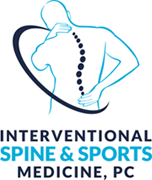PRP is an abbreviation for Platelet Rich Plasma. PRP is a restructured version of plasma that includes a higher concentration of platelets than regular plasma. Plasma is the liquid portion of blood that contains red and white blood cells, and platelets. Usually, platelets are only 10% of the blood’s cellular component, but PRP contains 90%. PRP therapy is used to speed the healing of injuries, which in many cases are related to athletics.
What is PRP Therapy and What Conditions Does it Treat?
PRP is used in sports medicine and orthopedics as a healing treatment. It is a non-surgical procedure and uses injections to stimulate and enhance the body’s healing. PRP alters a person’s blood in a way that triggers it to produce higher doses of its own natural healing properties. When more “growth factors” are produced, the body heals faster. PRP is used to treat soft tissue injuries including tendinitis, tendonosis, tendon tears, loose ligaments, ligament tears and sprains, and muscle tears. There is also evidence it is effective for treating arthritis and labrum tears in joints.

PRP is a part of an emerging health sector known as Orthobiologics. The goal of Orthobiologics is to combine the most cutting edge medical technology with a patient’s body’s natural ability to heal itself. This creates the most efficient healing possible. In the case of PRP, blood is enhanced outside of the body and re-injected to create an optimal healing environment.
What is the science behind PRP? Blood is made from red blood cells, white blood cells, plasma, and platelets. Platelets are sea sponge-like structure and when activated, release healing proteins known as growth factors. Growth factors have a variety of responsibilities, including accelerating the healing of tissue. When the number of platelets in blood is increased near the site of injury, healing occurs more quickly. Essentially, PRP treatment creates “super blood” that is able to repair and regenerate healthy tissue. There is also evidence growth factors can be isolated even more to reduce inflammation at an injury site, so PRP will be even more effective and feature fewer side effects.
Specific injuries and parts of the body that are treated with PRP include:
- Back and Spine injuries including arthritis, whiplash, ligament sprain, instability
- Torso injuries including rib problems
- Shoulder injuries including rotator cuff impingement syndrome, bursitis, tendinitis, or tear bicipital tendinitis, labrum tear, instability, arthritis
- Knee and Ankle injuries including patellar tendinitis, partially torn and strained major ligaments (ACL, MCL, LCL), instability, meniscus tears, chondromalacia, arthritis, Achilles tendinitis, peroneal tendinitis, and sprains
- Hip injuries including iliotibial band tendinitis (ITB Syndrome), greater trochanteric bursitis, psoas tendinitis and bursitis, labrum tears, arthritis, sacroiliac joint dysfunction
- Arm and Hand injuries including tennis elbow*, golfer’s elbow, DeQuervaine’s Tenosynovitis, trigger finger, arthritis, other wrist or finger tendonitis
*Our clinic is part of an FDA-approved trial on tennis elbow to determine if PRP is safe and effective.
